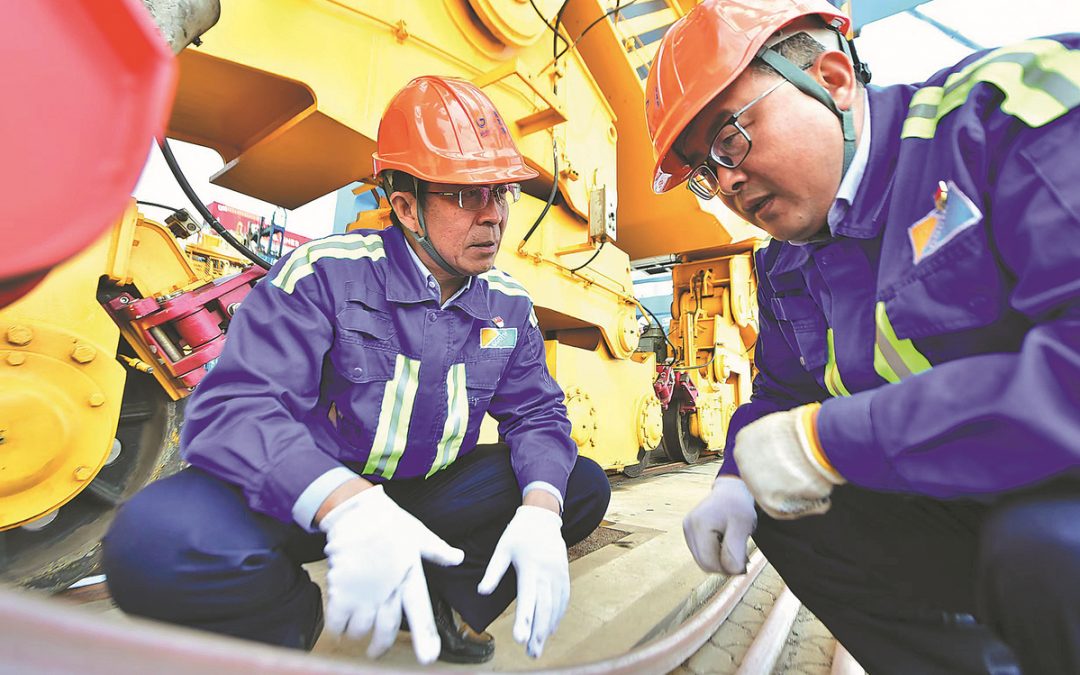These days, on the automated terminal at the Qingdao Port, run by Shandong Port Group, all containers are unloaded and transported by machines, with no workers seen on site.
But a decade ago, most of the loading and unloading jobs were done by people. The work was inefficient and came with high safety risks.
With the fully automated facilities, Qingdao Port has become one of the world’s leading automated container terminals, equipped with state-of-the-art technologies, a high degree of automation and loading and unloading efficiency. It was also the first fully automated container terminal in Asia.
In June, the port set a world record by achieving productivity in loading and unloading 60.18 containers per bridge crane per hour on average, according to port officials.
Supporting the technologies at the port is the Liangang Innovation Team led by Zhang Liangang, a senior expert of the port group. Zhang, 61, was a delegate to the 20th National Congress of the Communist Party of China.
Motivated by devotion and hard work instilled in all Party members, Zhang has led his team to make a series of innovative breakthroughs in building the fully automated container terminal.
“To build a world-class port, we have to unswervingly carry out independent innovation, because we don’t have materials and technologies to borrow and we have to rely on ourselves,” he said.
Zhang enrolled at the Wuhan Institute of Water Transportation Engineering, now the Wuhan University of Technology, to study automatic control when he was 19 years old. “I chose to study automatic control because our country had been left behind in the sector of electrical automation at that time,” he said. “My fellow students and I chose our major to help meet our country’s needs.”
Zhang seized every minute of the four years to acquire knowledge, hoping someday he would contribute to the country’s development.
After graduation in 1983, he started working at the Qingdao Port as a technician. He was motivated to improve the slow operation of the port.
“It took more than 160 workers eight to 10 days working in three shifts around the clock to unload a ship of 50,000 metric tons of fertilizer,” he recalled, adding the port didn’t have a container terminal at that time.
When the port decided to build its first such terminal in 1984, Zhang eagerly took part. Over the years, he has worked on developing electrical automation and building automated port facilities.
In 2013, although he was still recovering from surgery to treat lung cancer, he accepted the task to lead a team to build a fully automated container terminal.
“To build a fully automated container port had been our dream for generations,” he said. “If we could make it, it would be better for my health than medicine.”
Zhang and his team spent 15 months working day and night to complete the design of an automated container terminal.
It took three and a half years to build the terminal, which was finally put into service in 2017.
“Our terminal has a production efficiency that is 50 percent higher than other ports with similar automated terminals,” Zhang said.
Even after that accomplishment, he wasn’t content. He and his team continue to develop innovative technologies, and last year, they created the world’s first hydrogen-powered port with 5G intelligence.
Zhang has been paying attention to bringing in young talent. The innovation team now has more than 100 technical experts focused on the work at the automated container terminal.
Source: Hellenic Shipping News






